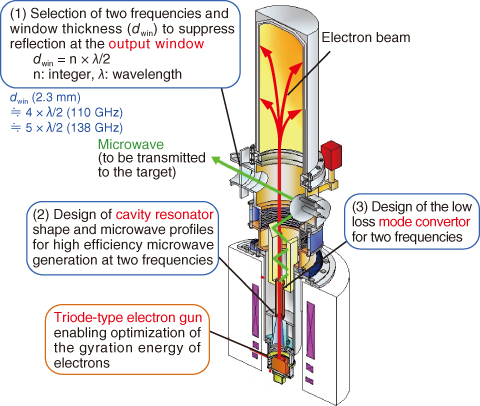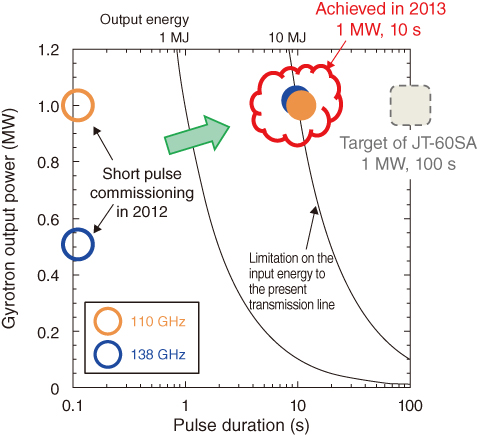
Fig.9-19 Key points of the gyrotron design for obtaining high performance at two frequencies
 ), and the optimum energy of electron gyration was obtained with a triode electron gun.
), and the optimum energy of electron gyration was obtained with a triode electron gun.

Fig.9-20 Progress in high-power, long-pulse development and its target value
An electron cyclotron heating (ECH) system will generate or sustain high-performance plasma in JT-60SA through the injection of high-powered microwaves. ECH enables the plasma to be heated locally where the magnetic field strength corresponds to the microwave frequency. However, long-pulse operation of a gyrotron, which is a source of high-powered microwave, was previously obtained only at a single frequency. Consequently, it was not capable of heating the desired position in the plasma when the magnetic field was changed. To solve this issue, a dual-frequency gyrotron, which can independently be operated at two frequencies, is being developed.
Three key points of the dual frequency gyrotron design (Fig.9-19) are as follows. (1) The thickness of the output window was required to be a multiple of one half of the wavelength for complete suppression of the reflection at the window. (2) A desired set of operating frequencies and microwave profiles in a cavity resonator was required to obtain high conversion efficiency from the energy of the beam from the electron gun to the microwave energy. These conditions have been satisfied simultaneously with a window thickness of 2.3 mm and frequencies of 110 GHz and 138 GHz. Moreover, (3) the shape of the mode convertor, which converts the microwave profile oscillating in the cavity resonator to one suitable for transmission, has been designed to reduce internal loss. A gyrotron design that was sufficient for high-power, long-pulse operations without overheating of the gyrotron internal components was obtained.
To obtain high efficiency in practical operation, an optimized condition of the gyration energy of the electrons in the electron beam was required. The developed gyrotron was equipped with a triode-type electron gun, whereby the gyration energy of the electrons could be controlled. This characteristic enabled us to obtain high efficiency at both frequencies as expected, which was not possible with a diode-type electron gun (e.g., 0.95 MW/140 GHz, 0.85 MW/105 GHz in Russia). The developed gyrotron successfully operated at a nominal output power of 1 MW for 10 s (Fig.9-20). This result set a world record for dual-frequency gyrotrons.
Moreover, we confirmed that the internal loss at the mode convertor and the temperature increases of the components were sufficiently low, as was expected. Although the cooling capability of the transmission line for transmitting the microwave from the window to the target to be heated limited the pulse length this year, it should be possible to expand the pulse length toward the target (1 MW/100 s) by improving the transmission line for JT-60SA.